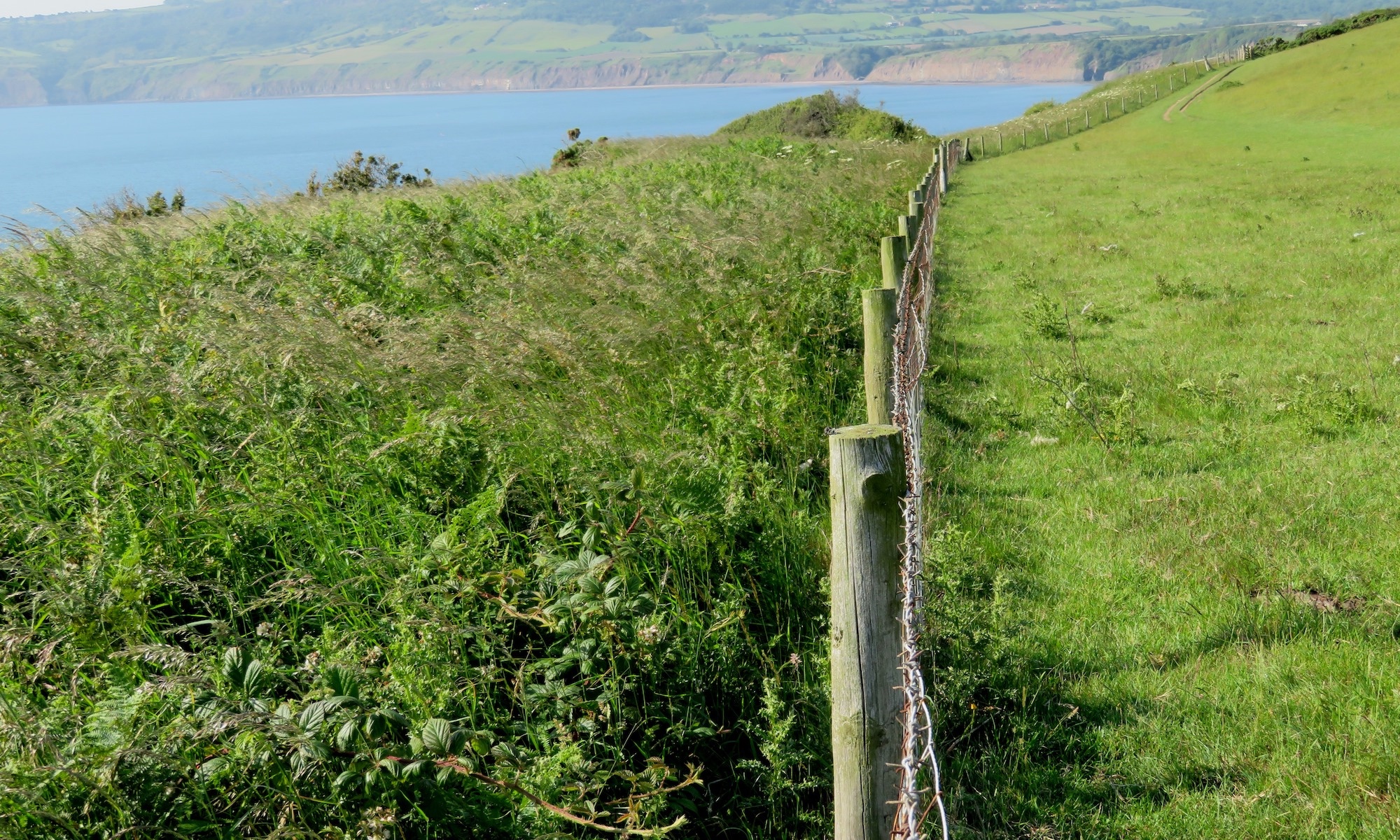by Jessica Penrose
30th September, 2021
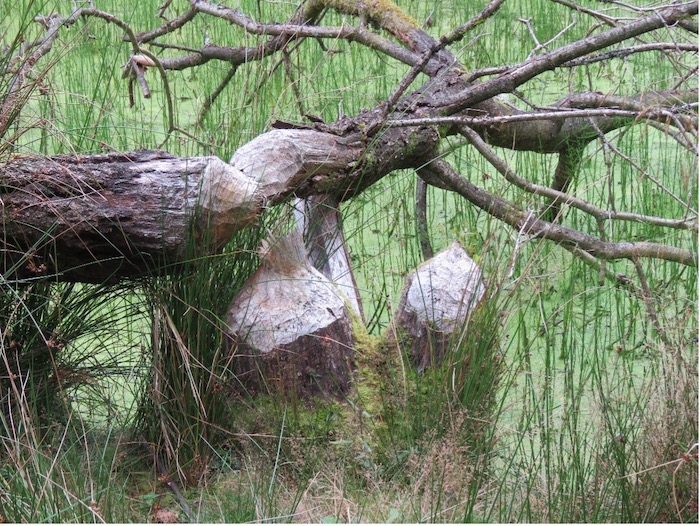
As soon as I see the first beaver tooth marks on the stump of a neatly felled tree I am hooked – this is a new world. We slosh through in our wellies where once there had been a path on firm ground, and our guide, ecologist Cath Bashforth, opens our eyes to the fascinating transformation that has taken place in this quiet valley.
A pair of Eurasian beavers were brought here from Scotland in April 2019 for the start of a five-year trial by Forestry England. They were released into a 10 ha enclosure in a semi-wilded area, where a couple of neglected Victorian ornamental ponds, bordered by a narrow river, provided their perfect starting place.
It wasn’t long before the beavers’ exploration of their new home showed them that one of the ponds was leaking. Having bunged up the hole with marestail and other vegetation, the pair set about making their first dams and transforming the landscape.
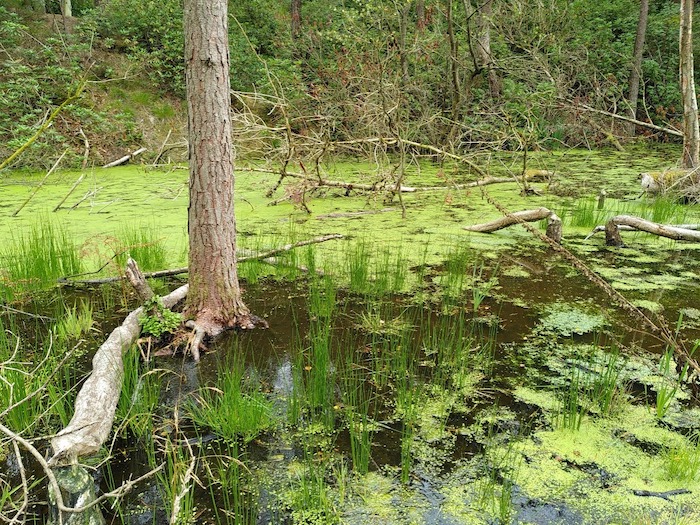
Small trees were felled at the perimeter of the ponds and side branches chewed off to form poles. The river was soon expertly dammed with mud, small sticks, poles and vegetation, and as water levels rose, so did the dam, eventually reaching its current height of 2m. The dam is not only a remarkable piece of engineering, it also seems to be unusually high compared to those on other UK sites.
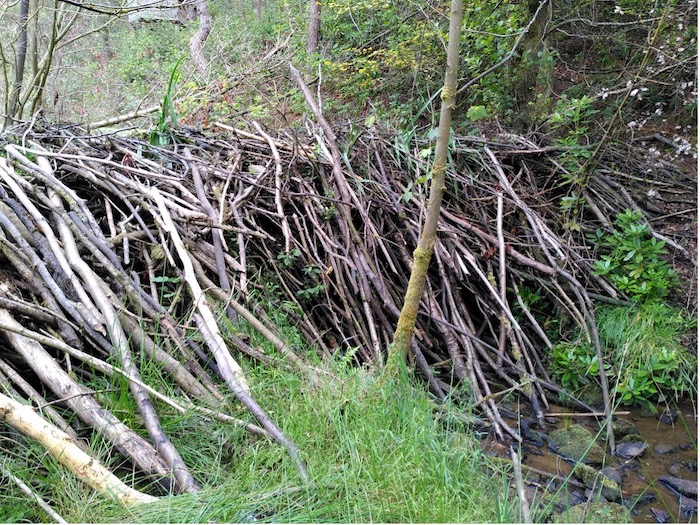
With a new pool created behind the river dam a neat channel was excavated by the beavers to link this with the existing ponds. Then, having to contend with the varying water levels, all their damming skills went into creating a giant structure that would give them what they needed – this quiet, green, watery world that is now bursting with life.
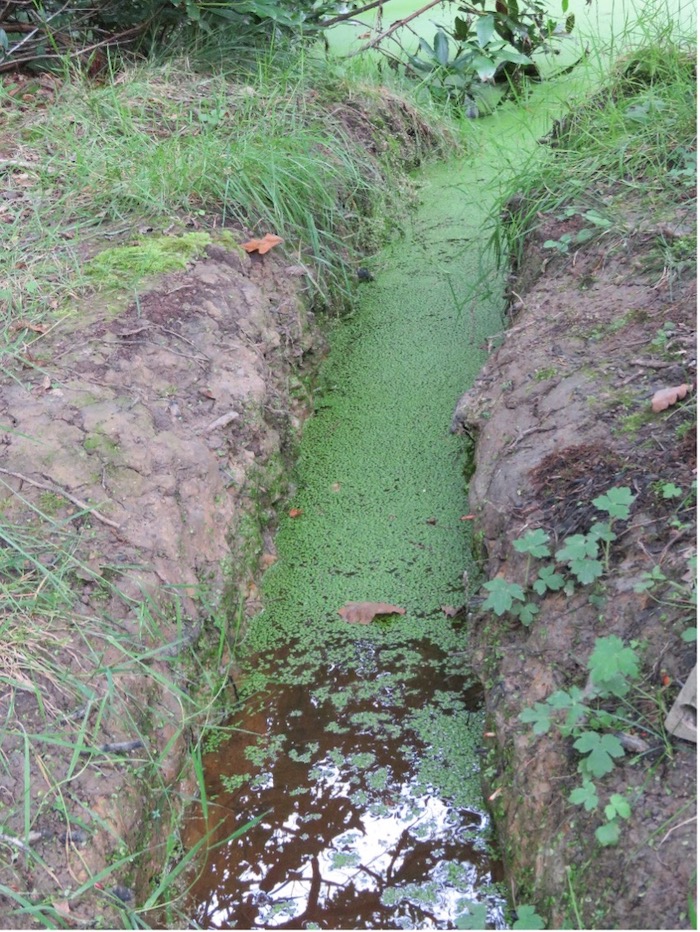
A pre-release baseline survey in 2019 counted only six blobs of frog spawn. This spring there was so much that it became impossible to count, leading to a bonanza of food for herons, otters and tawny owls., and dragonflies, bats and other insect feeders are here in abundance.
The project had been devised in late 2018 with two aims in mind – not only increasing biodiversity, but also building on work that had been done in the area as part of a DEFRA-funded Slow the Flow project. This flood reduction initiative had resulted in the construction of over 100 small leaky dams and two large timber bunds in the watercourse. But with no ongoing funding for maintenance of the structures, Forestry England wanted to see if beavers could do the job – by either adopting the human built dams or creating enough of their own to have a significant effect on flooding downstream.
Five universities – York, Teeside, Exeter, Leeds and Hull – are currently monitoring and carrying out research using data from the project, including behavioural studies involving hours of footage from the many camera traps set out around the site. It was this footage which gave a glimpse into another surprising tactic the beavers use: they were seen splitting up clumps of flag iris and replanting them along the top of the dam, evenly spread out. It’s not clear why – perhaps to shore up the mud-based structure or as a food source, or both.
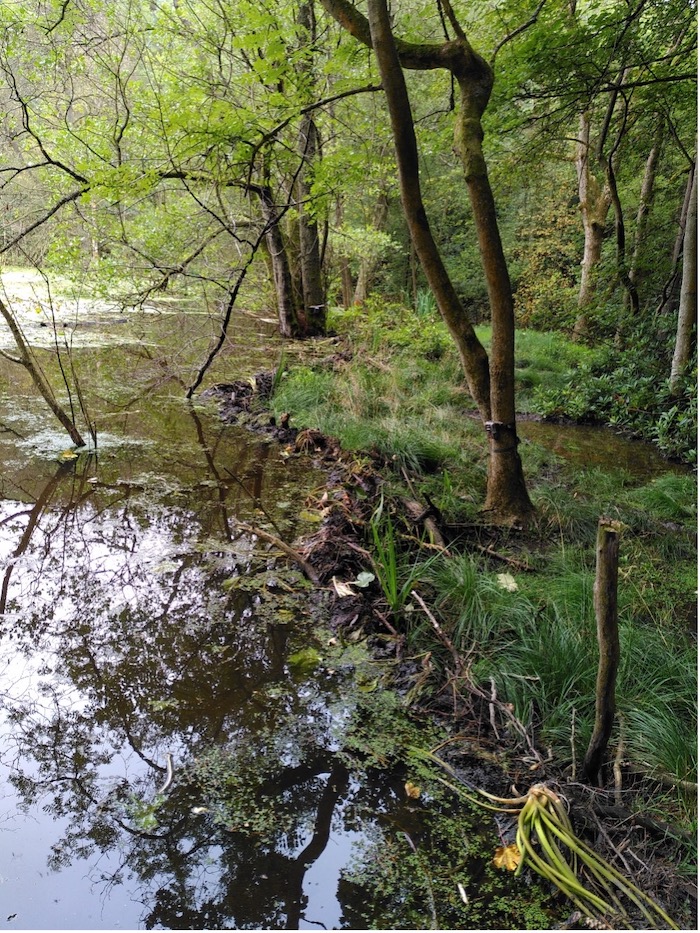
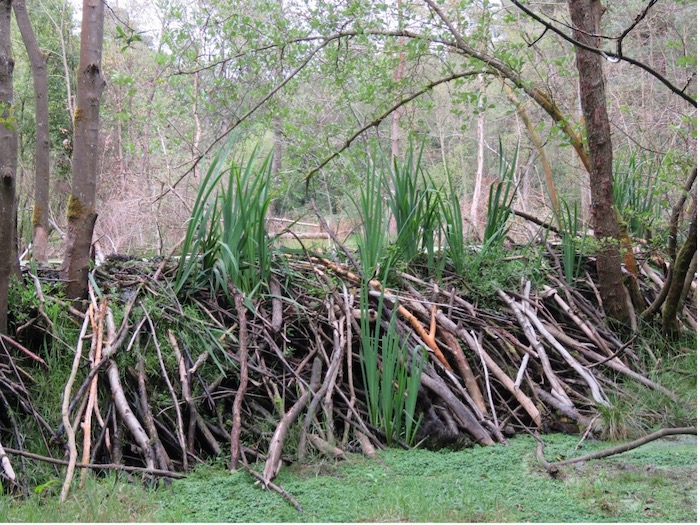
As we wend our way over, under and between felled and submerged trees, Cath points out where the beavers have stripped off the bark for food and how some of the younger trees are reshooting after the beavers’ efficient coppicing. A few trees have been fenced off to protect them – those near the boundary fence and also two veteran oaks close to what was once the river bank. Even very large trees are not immune to beaver attention – they will return to a large trunk again and again, sometimes for over a year, creating the most extraordinary sculptural shapes before the tree eventually succumbs and is brought down in winter storms or high winds.
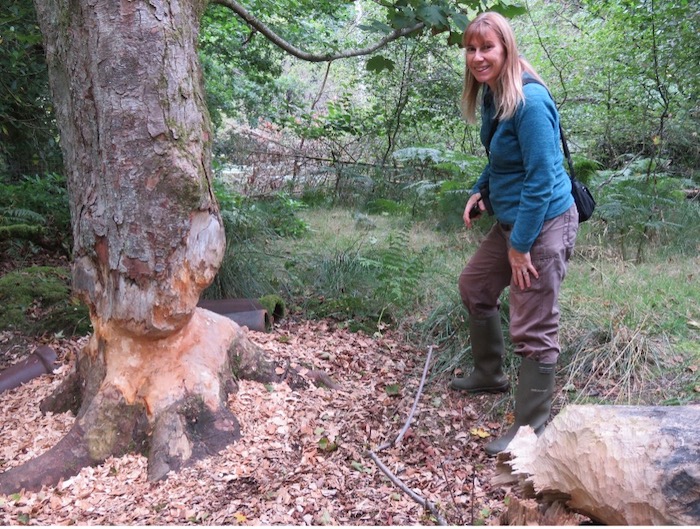
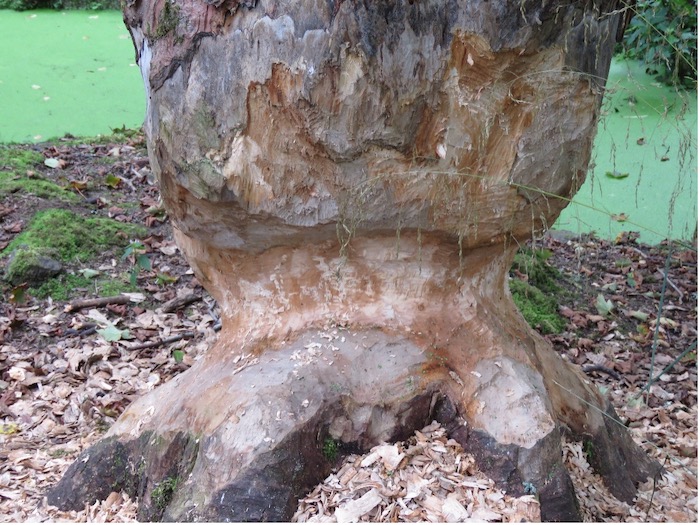
There are currently a total of 10 beavers in the enclosure. When the original pair arrived, the female was luckily already pregnant and two kits were successfully raised that year. Since then, six more kits have been added to the family group, who are all closely bonded and live together in the one large lodge they built for themselves [ignoring the artificial lodge built by the human team to welcome them]. The oldest kits would normally be due to move on in the wild, so a decision will be made this autumn about where they could be rehomed. The 10 ha enclosure can only support around 12 to 15 beavers in total, so rehoming will continue to be needed during the remaining three years of the project. In 2024, one of three proposed exit strategies will be implemented, depending on the legal position of beavers in England by then: to leave the family in the enclosure, to move them elsewhere or to take away the fences (after local consultation) and let them live wild.
Local support is strong for now – 60% of people who came along to initial talks about the project signed up to be volunteers on the spot, and local residents regard the animals as ‘our beavers’. Cath continues to liaise with farming and fishing communities in the area, as well as offering mentoring and advice to others working on similar projects elsewhere. For her, this is far and away the best part of her job and a highlight of her career, and she hopes that the trial will prove a success.
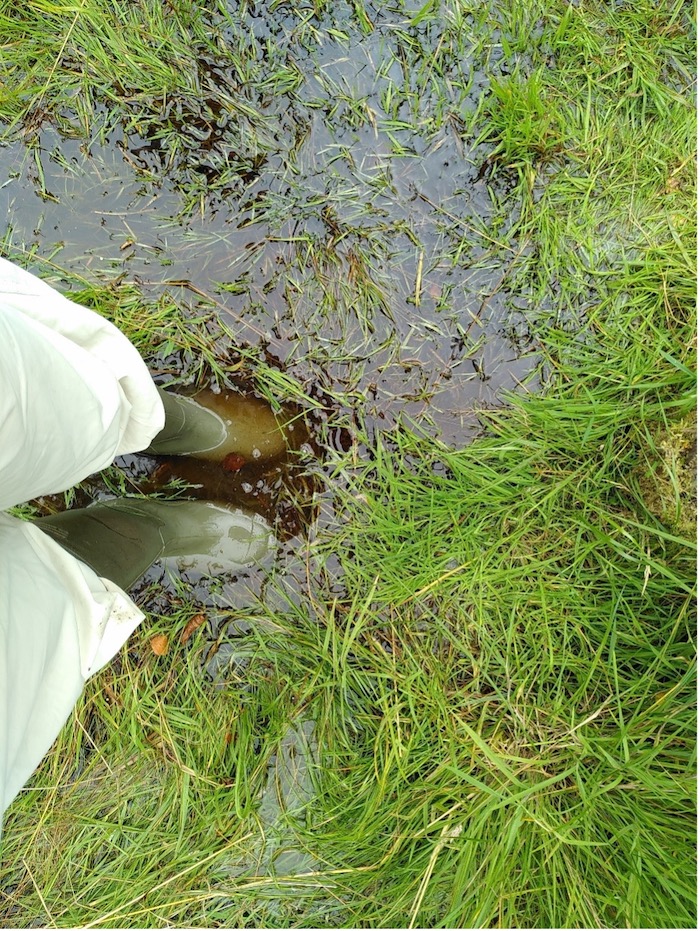
As the afternoon wears on, we have the tantalising prospect of seeing the beavers themselves, as they often appear from early evening. But this is a delight reserved for the volunteer team of fence-checkers who are to follow on from us, so we step through the steel gate, locked behind us, and back into a world just that little bit duller, where water no longer rules.
Videos:
The following trailcam clips are courtesy of Cath Bashforth. Click to view and “expand to full screen” for the best view. Press “esc” to return to this page.
Notes:
- The Eurasian beaver (Castor fiber) is native to the UK but was hunted to extinction here 400 years ago.
- It is widely regarded as a keystone species and eco-system engineer which could play an important role in increasing bio-diversity and mitigating the effects of climate change.
- In August 2021 the UK government launched a public consultation to gauge public opinion on the release and management of beavers into the wild in England.
Further information about beavers in the UK can be found at:
Thanks:
Many thanks to Cath Bashforth, Yorkshire Forest District Ecologist with Forestry Commission England, for kindly showing our small group of committee members and volunteers round the project in August 2021.
